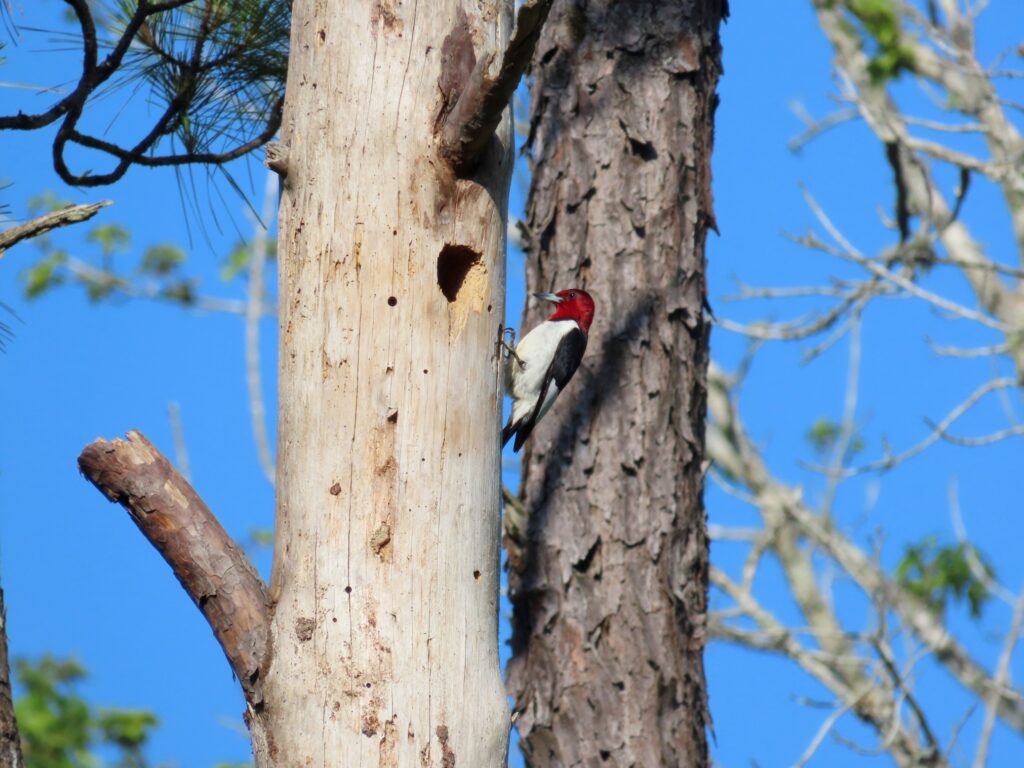

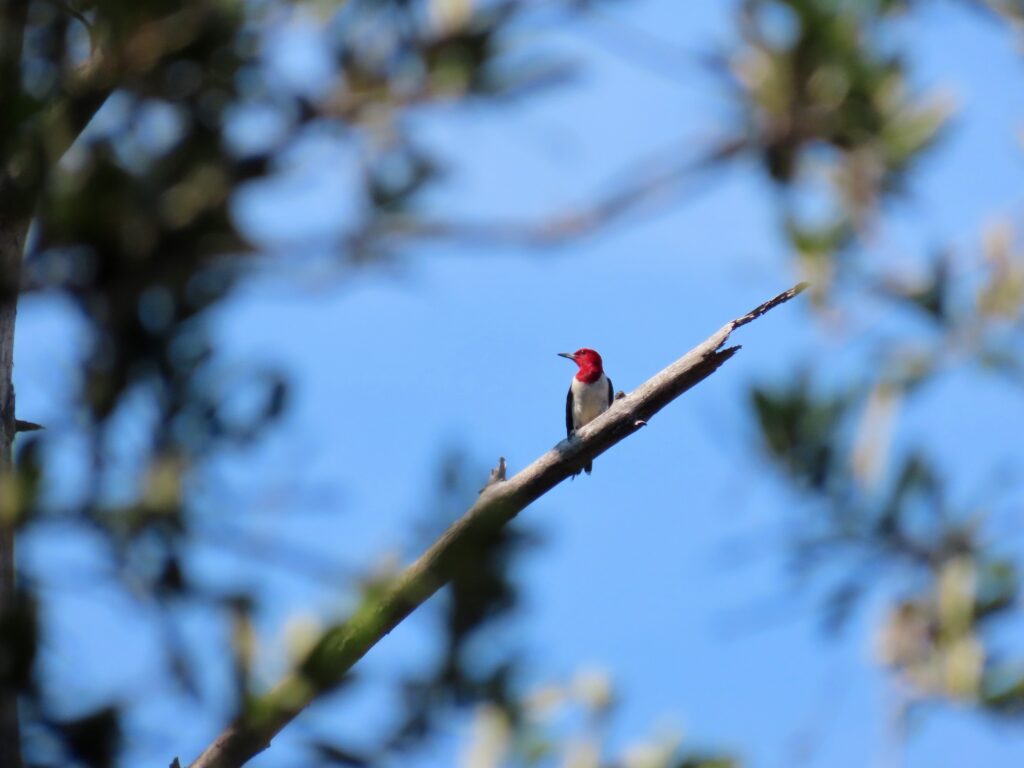
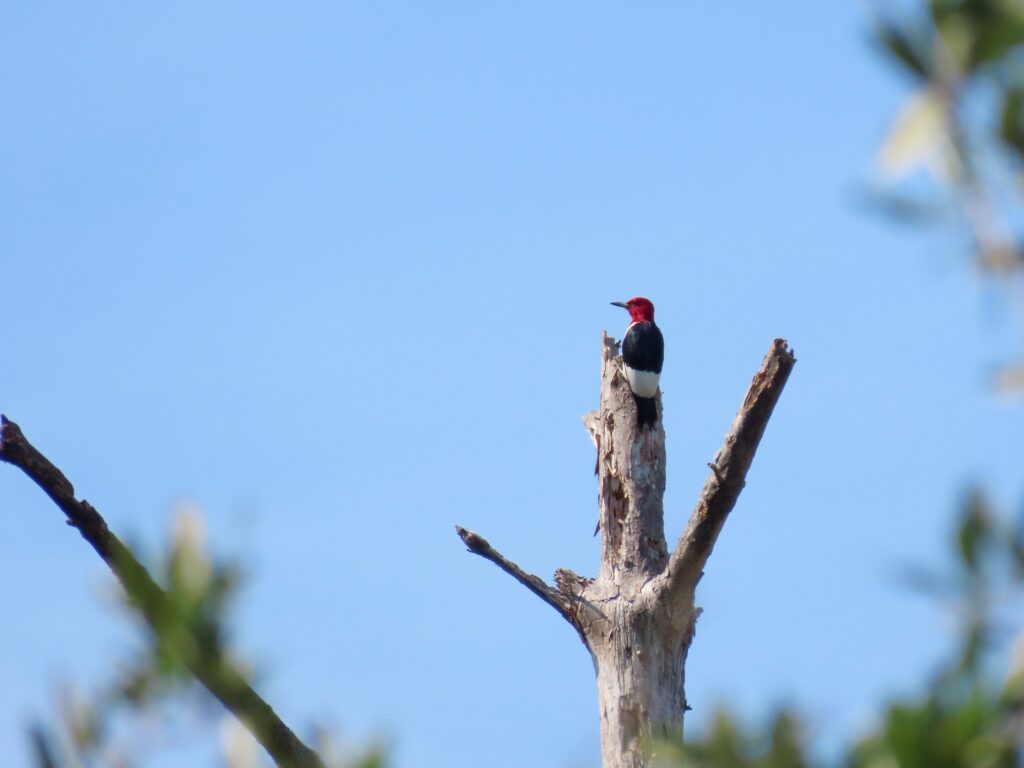
This week for Flora and Fauna Friday it’s the colorful, colonial, and cacophonous Red-headed Woodpecker (Melanerpes erythrocephalus).
With a bellowing and a banging this boisterous bird comes barreling up the bottomland to lit above a beaver dam. Black and white and red all over the dome, this bird is unmistakable by eye. A sold blood-red head, silver bill, a jet-black back and tail, along with snow-white belly and secondaries gives this bird an utterly one-of-a-kind plumage in the Eastern United States. And it’s also unignorable by ear, with startled vibrating screams and resonant barking rattles that ring throughout the canopy as one, then two, then four birds join in. Red-headed Woodpeckers are, sort of, a colony forming Woodpecker. They’re not a close nit family unit, and thus not a true colony, but more a tenuous alliance of neighbors to further self-interested goals, like an HOA, or maybe a street gang, or both. The Red-headed Woodpecker is found year-round throughout much of the South, to include all of South Carolina. They are omnivorous and their varied diet consists of wood boring insects, flying insects, seeds, nuts, fruits, and small vertebrates. They also build seed caches to help get them through the winter. Red-headed Woodpeckers inhabit forests dense with hardwood trees and have a strong preference for floodplains and the margins of large wetland systems. In the Lowcountry, Red-headed Woodpecker colonies can most often be found along river floodplains, bottomland margins, sea island lowlands, ghost forests, and beaver dams. These forest types foster environmental conditions that stress the trees and occasionally kill off a good number of them. These environmental stressors and periodic tree die offs create the perfect little suburban neighborhood for a merry band of miscreant Red-headed Woodpeckers to move into. The stressed trees of these environments are prone to disease, which subsequently invites insect pests, creating a pantry for our Woodpeckers to pursue. The already dead trees harbor insects as well but, more importantly, they collectively create a ghost forest. Here the Woodpeckers can excavate their nest cavities for years going forward. Surrounding these dead and dying trees are generally also some oaks, beeches, and other seed-bearing trees that are doing just fine on the rich wetland soils and produce a bounty of seeds for the Woodpeckers to feast upon each year. Not a bad neighborhood for a Woodpecker to move into! But Red-headed Woodpeckers don’t want neighbors. They have a darker side and they are known to raid other birds’ nests to eat the eggs and chicks, or to injure the parent birds in the process. This harassment continues until the encroaching birds leave or die. This exclusionary behavior and their particular habitat preferences give Red-headed Woodpeckers a sporadic distribution across their range. They concentrate into very specific regions of the landscape and are scarcely found anywhere else. This is unlike many of our other Woodpecker species, which are rather ubiquitous throughout the Lowcountry and coexist in separate niches.
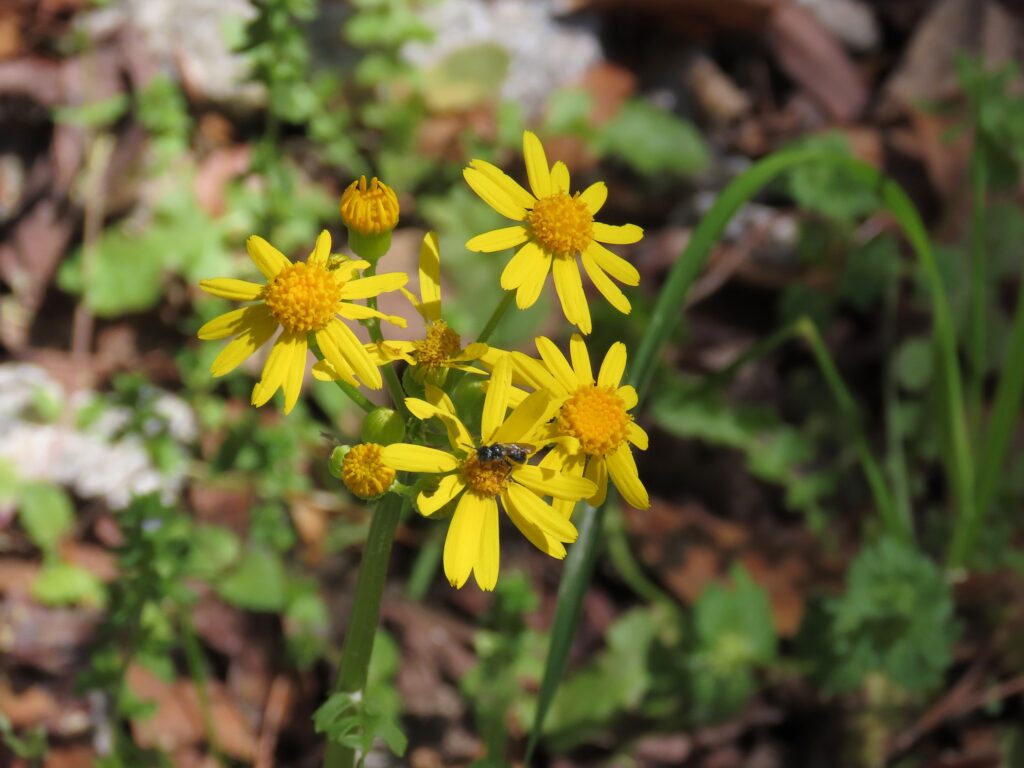
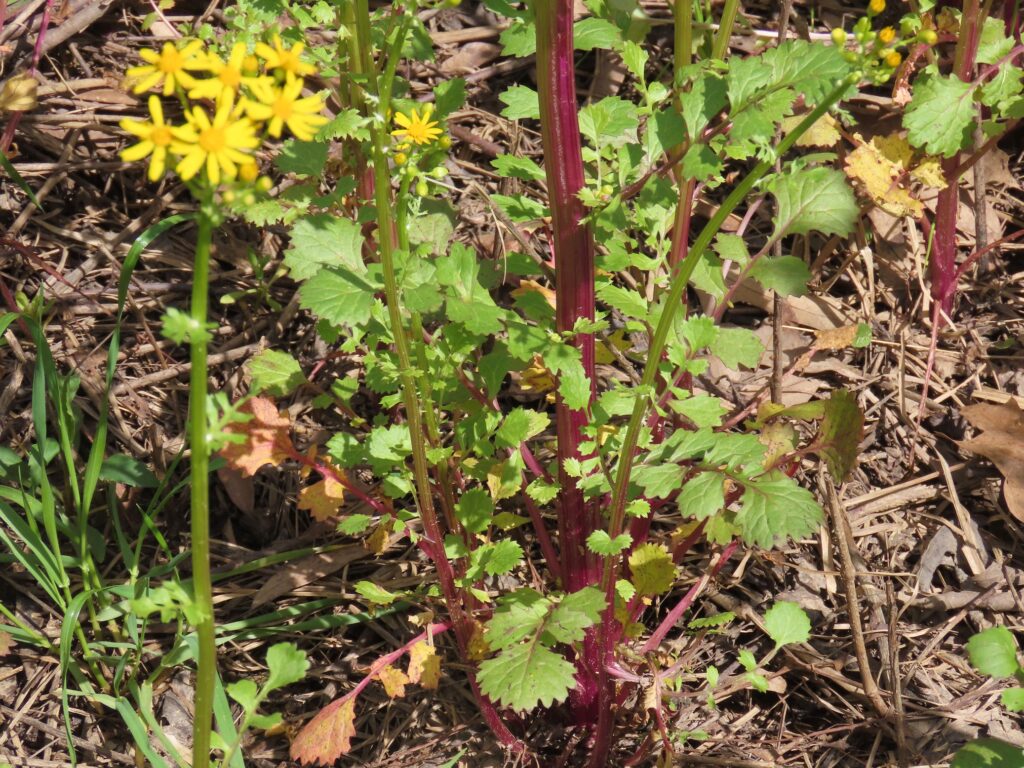
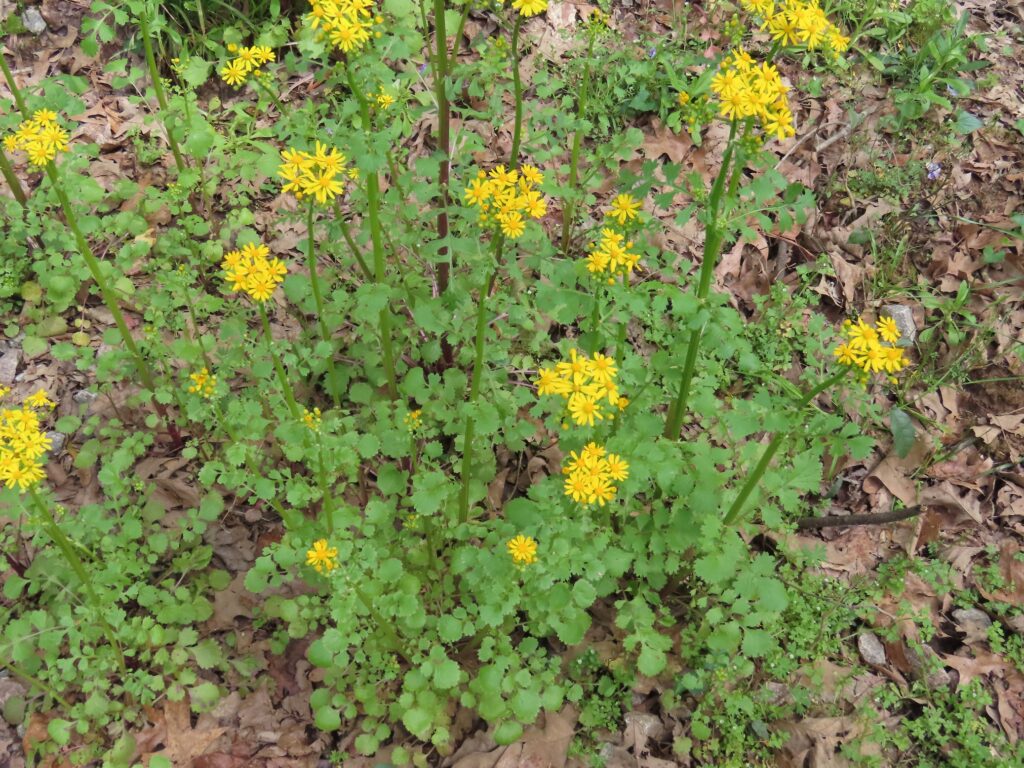
This week for Flora and Fauna Friday we have one of our first flowers of the floodplain forest, Butterweed (Packera glabella).
Butterweed is annual wildflower in the sunflower family, Asteraceae. It is found throughout the coastal plain and piedmont of South Carolina. Butterweed is a wetland plant, typically growing in sunny, disturbed, poorly drained, fertile soils in the lower floodplains of freshwater rivers, to include areas such as fields, swales, clear-cuts, power lines, bridges, or roadsides. It can be incredibly abundant under the right site conditions. It grows from about knee to waist high, generally in disorganized clumps with a weedy appearance. Its stem is thick, ribbed, and hollow with a blush of purple-red darkening towards the base and along the ridges of the stem. Its leaves are pinnately compound with uneven, round, and toothed leaflets that expand in size as you move towards the tip of the leaf. The real defining characteristic of Butterweed, and its namesake, are its buttery yellow flowers. Butterweed bears a prolific profusion of brilliant flowers at the top of the flower stalk. The flowers have lemon-yellow petals and a rich yolk-yellow center. Each flower is about a three-quarters of an inch wide and the flower clusters are mostly flat but with a slight dome. Butterweed blooms throughout March and April, peaking at the start of April. These flowers are frequented by many species of pollinators, of all shapes and sizes.
Butterweed, and the other Ragworts in genus Packera, are avoided by White-tailed Deer and other native herbivores. This avoidance is due to their toxicity and allows Butterweed to grow more or less undisturbed. Butterweed foliage contains pyrrolizidine alkaloids, which cause acute liver damage and impair the nervous system in mammals that eat their foliage, even at fairly low concentrations. This can be dangerous to horses and cattle that are pastured in floodplain fields or fed hay harvested from these areas. So although Butterweed is an easy to grow and fairly pest-free pollinator plant, it is best kept out of home gardens, as it can readily volunteer and could become a hazard to foraging pets.
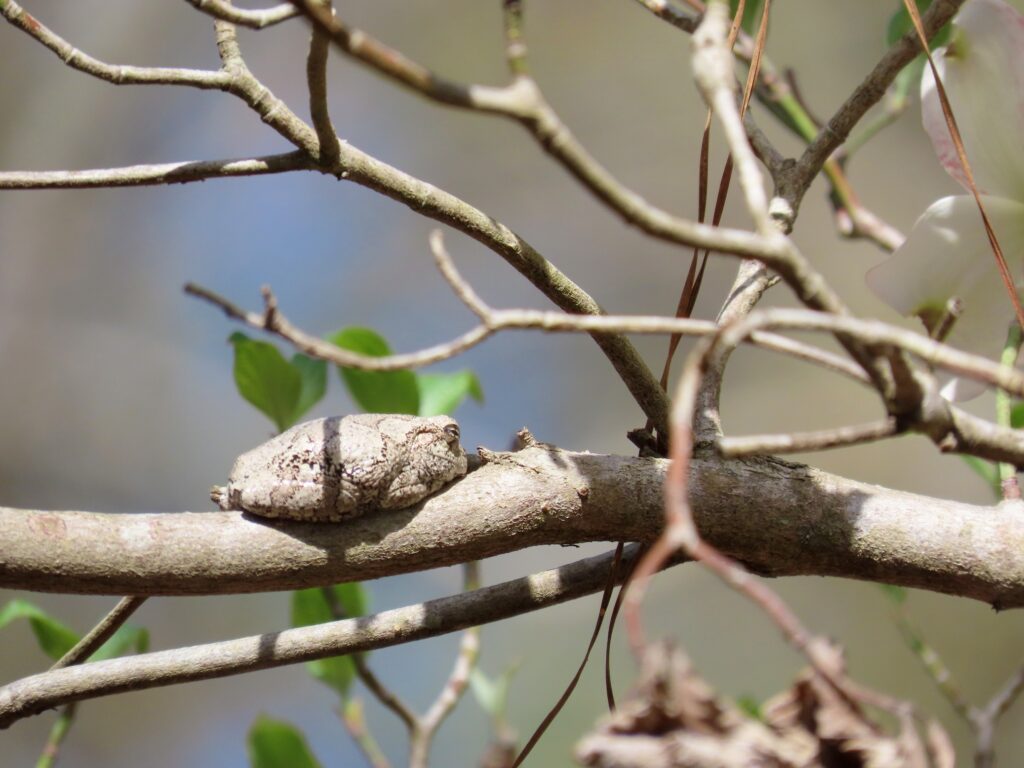
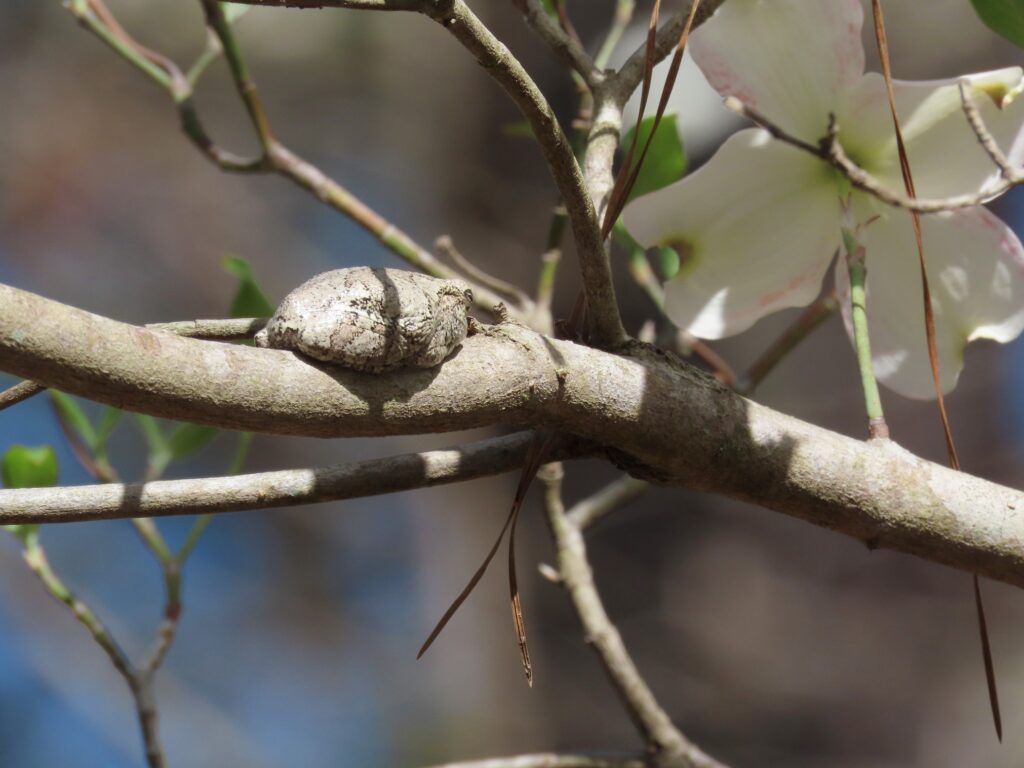
This week for Flora and Fauna Friday we’re on the lookout for a cryptic climbing amphibian of the forest canopy, the Cope’s Gray Treefrog (Hyla chrysoscelis).
The Cope’s Gray Treefrog is found throughout the southeastern United States, to include all of South Carolina and our Sea Islands. It has a sister species to the north, the Gray Treefrog (H. versicolor), that is nearly identical in appearance but not found in South Carolina. The Cope’s Gray Treefrog is unique in many regards to our other Treefrogs. It is colored to camouflage itself with tree bark and any lichens growing on that tree. Its skin is bumpy, covered in fine warts across its body, giving it the texture of a lichen, and is colored ash-gray, faded-bronze, or pastel-green with uneven darker stripes and blotches to blend them into the bark background. This makes them nearly impossible to spot when motionless on an appropriately colored limb or tree trunk. The only flashy color on them is a wash of orange along the joints of their legs, which is peppered in tangerine spots on the back of their thighs. All this color is hidden from sight unless they’re in motion. The skin of the Gray Treefrogs also secretes a toxin that irritates mucus membranes, like are found in the mouth, eyes, and nose. This is a defensive toxin to discourage predators and can irritate you as well, if you forget to wash your hands after picking one up, but is otherwise harmless to humans.
The Cope’s Gray Treefrog is one of our most arboreal Treefrogs, spending much of their time in the canopies of hardwood trees. They are primarily nocturnal, hiding under bark or in holes during the day and hunting insects and arthropods at night. They prefer mature deciduous forests and, although quite common, are hard to lay eyes on due to their cryptic colors, nocturnal nature, and elevated lifestyle. However, they aren’t a hard frog to hear! Cope’s Gray Treefrogs have a loud, resonant trill that last about a second. It is a common sound in the spring forest, reverberating through the treetops. Like all our Treefrogs, males have an expandable throat pouch that they inflate to amplify their call. Cope’s Gray Treefrogs rely on fishless, ephemeral wetlands to safely rear their offspring. From spring through mid-summer, they’ll descend to the forest floor after heavy rains to mix and mingle at the margins of these ephemeral wetlands. There their tadpoles will quickly hatch, grow, and metamorphose into miniature froglets, all before the wetland dries up again.
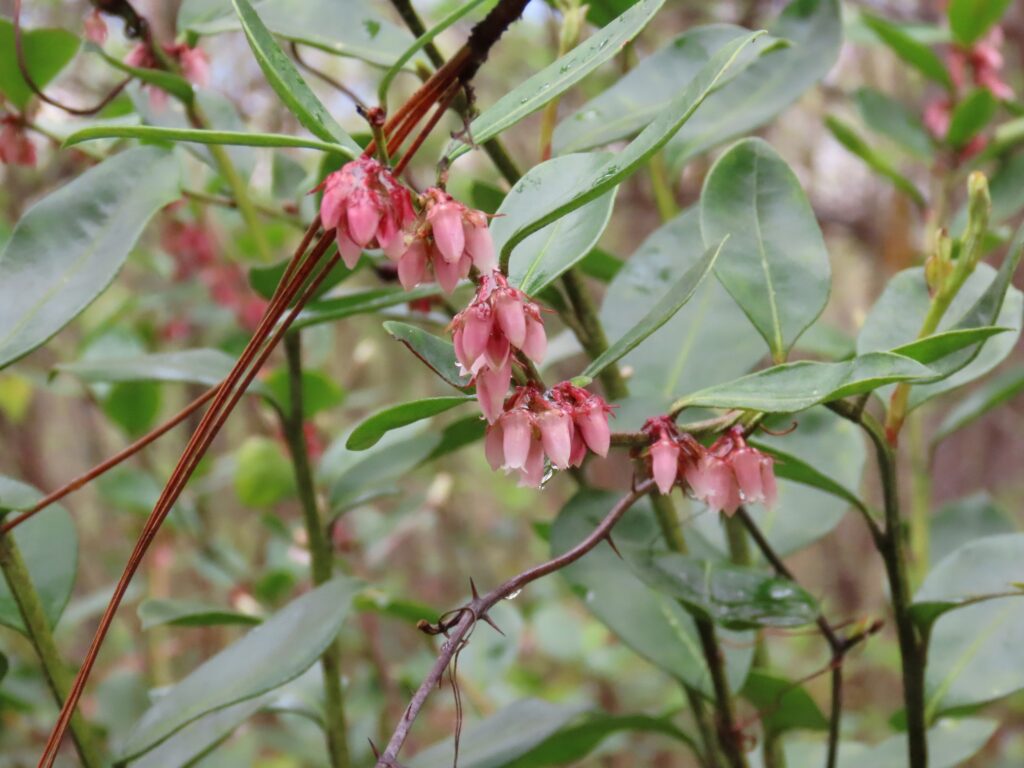
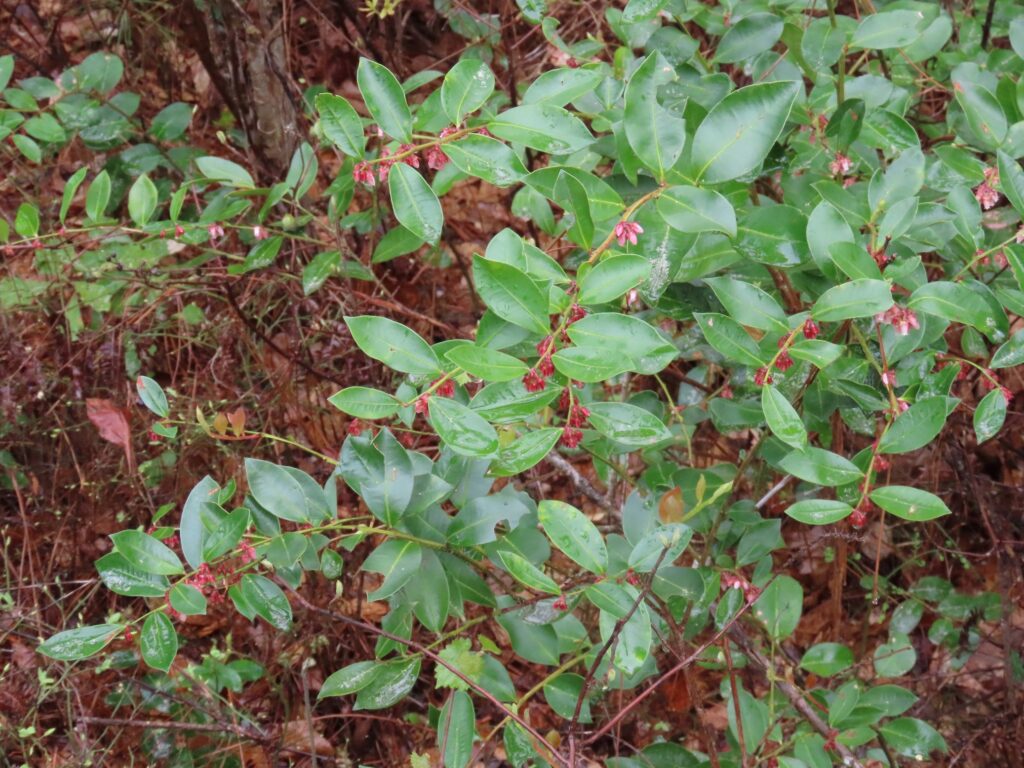
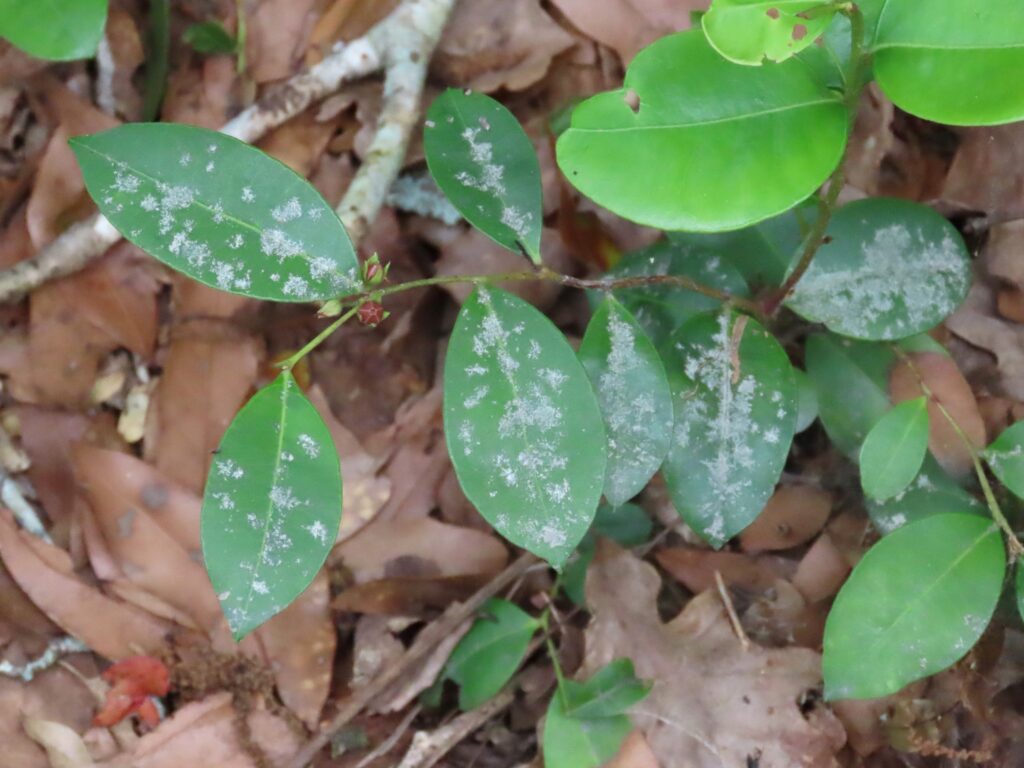
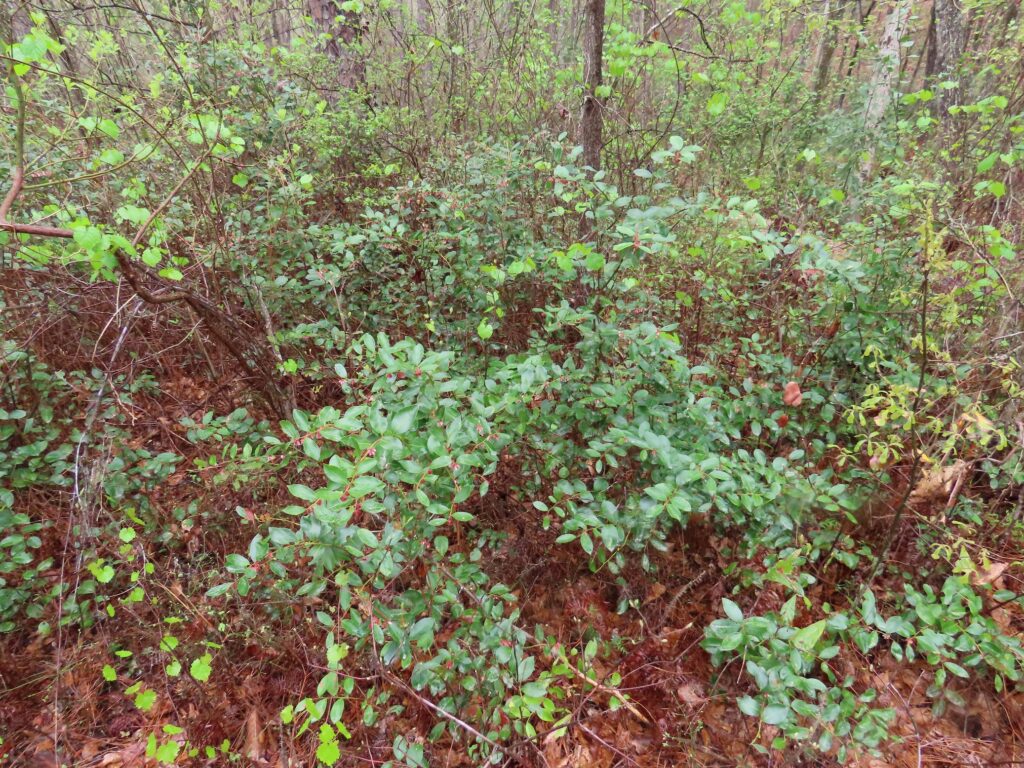
This week for Flora and Fauna Friday we have the perimeter of the pocosin and border of the bay, Shining Fetterbush (Lyonia lucida).
Shining Fetterbush is a spreading shrub found on acidic, moist soils throughout the Lowcountry of SC. It grows from waist to head high with arching, intersecting limbs and spreads to form dense thickets. Its common name, Fetterbush, comes from its impressive ability to restrain, or fetter, anyone trying to walk through the stuff. Often it forms a near impenetrable wall around the margin of a wetland. Fetterbush is commonly found around the rims of pocosins, also known as “Carolina Bays”, and it often borders bogs, fens, and other ephemeral wetlands with highly acidic soils. It can thrive in acidic soils because it is a member of the Heath family, Ericaceae, whose members, to include Blueberries and Azaleas, are especially well adapted to extracting nutrients from even the most acidic of soils. Like many Heaths, Fetterbush has simple, evergreen leaves and, more particularly, those of Fetterbush are about two to three inches long, half as wide, round, and leathery with a shiny surface. It also bears a very Blueberry-like flower, with a half-dozen or so white to pink, pendulous, urn-shaped flowers dangling from every leaf node. Fetterbush blooms very early in spring and is relied upon by several species of our native bees for pollen. Unlike Blueberries, Fetterbush’s flowers mature into hard, dry seed-capsules rather than soft fruits.
Shining Fetterbush is a good example of an indicator species, its presence always indicates two things: highly acidic soils and moisture. An indicator species is a plant or animal whose presence signifies an environmental condition, be it a general indication of ecosystem health or a highly specific site characteristic. Indicator species offer scientists, ecologists, property managers, farmers, and foresters an efficient way to predict site conditions, plan out land uses, and narrow down options in their day to day work and to quickly ascertain what they’re looking at when on a new property.
Above: Greater Yellowlegs on left and Lesser Yellowlegs on right.
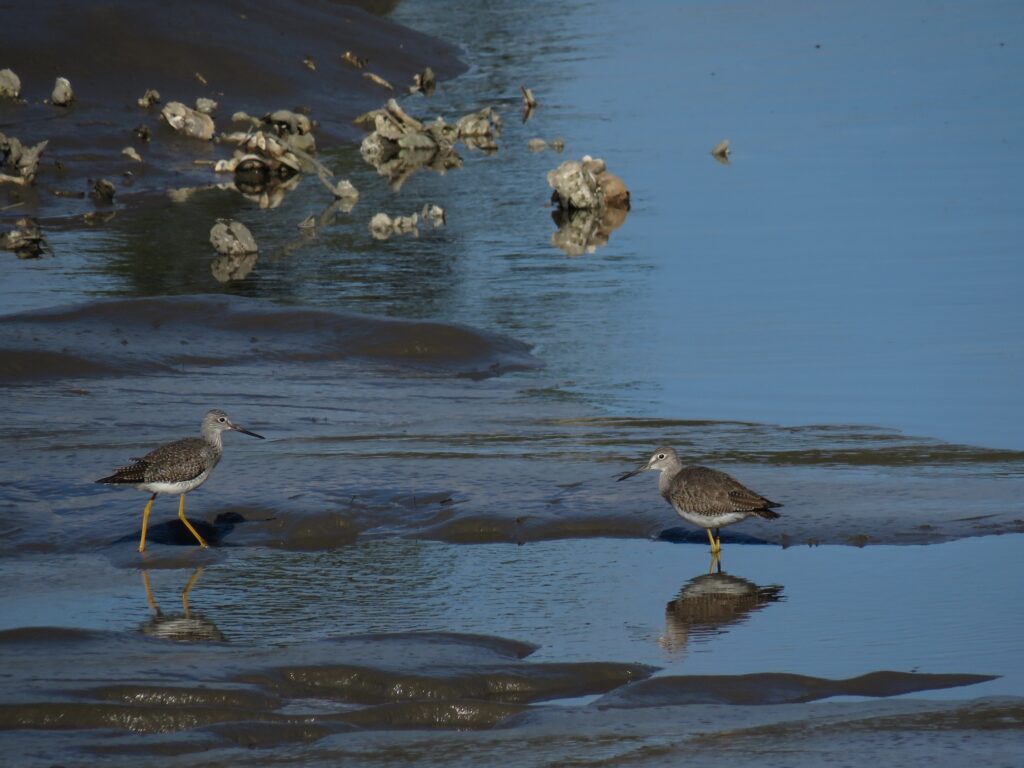
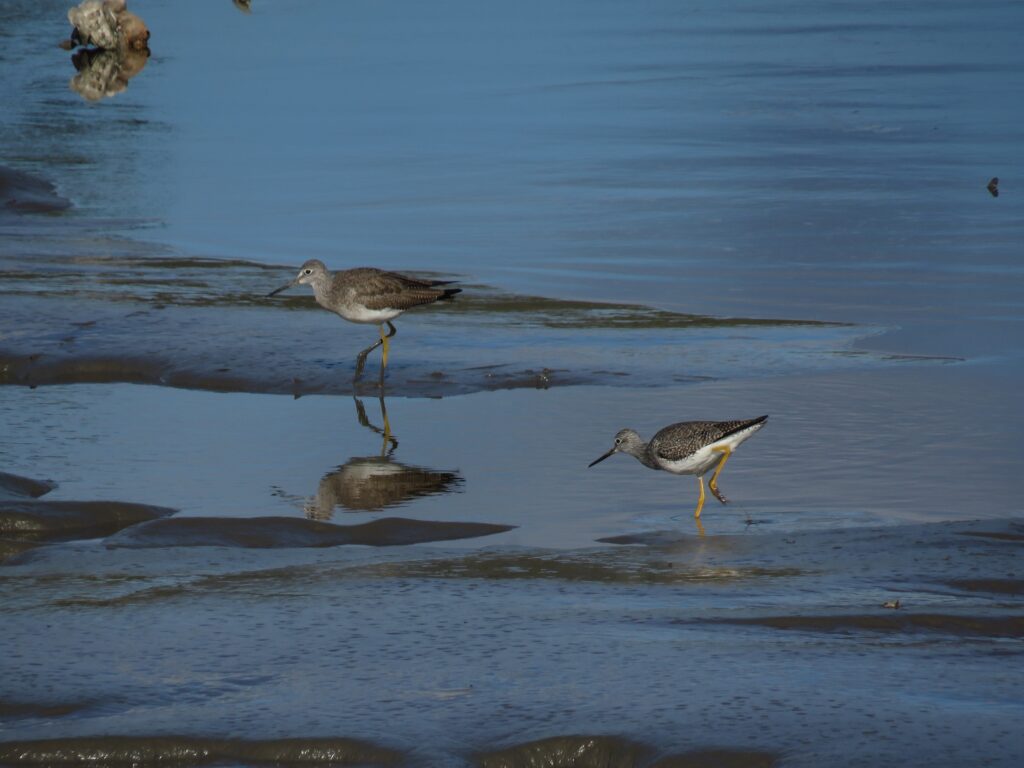
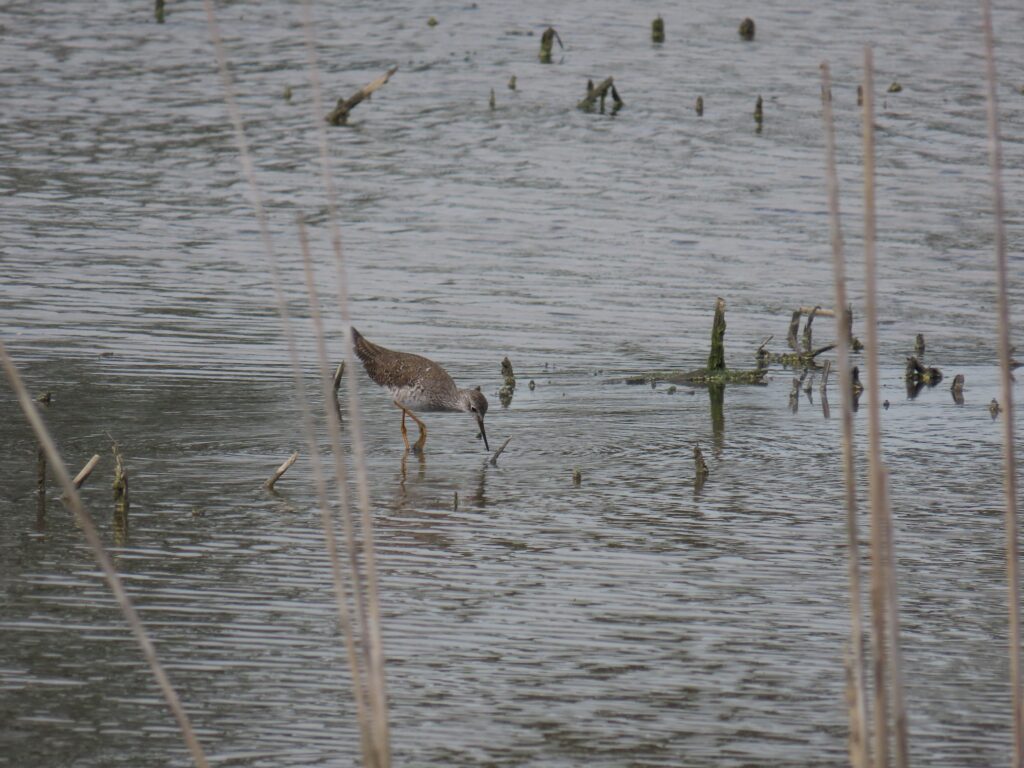
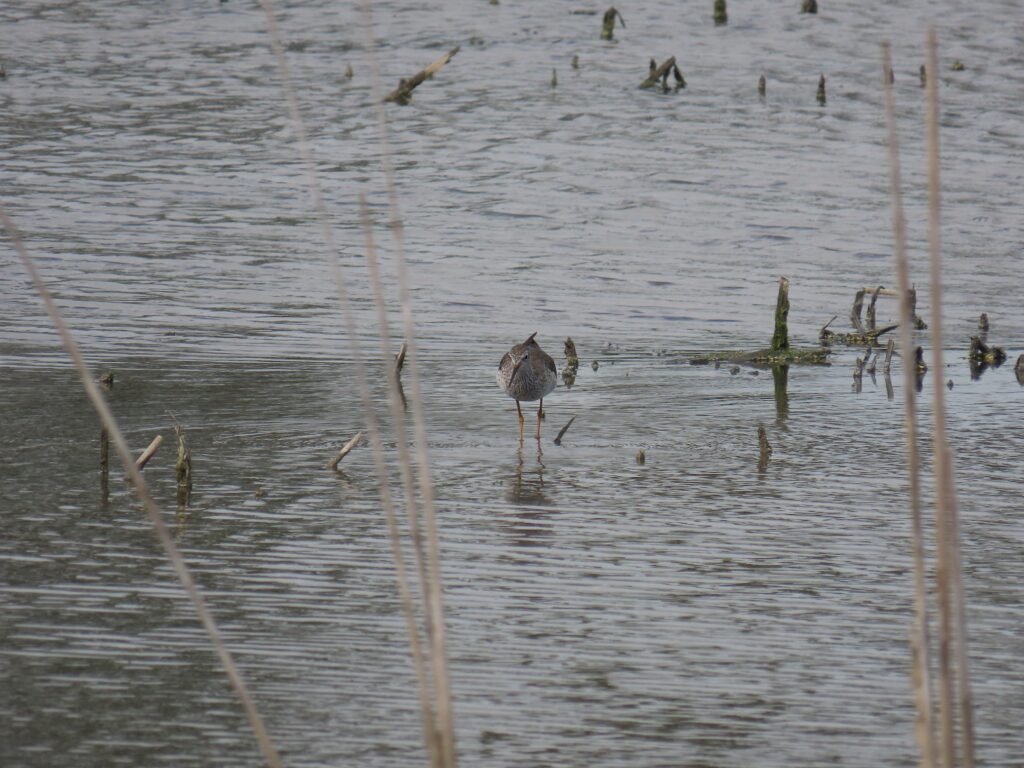
Top Row: Pair of Greater Yellowlegs on saltwater mudflat.
Bottom Row: Lesser Yellowlegs in managed rice impoundment.
This week for Flora and Fauna Friday it’s a pair of shorebirds prone to perplexing even proficient birders, the Greater and the Lesser Yellowlegs (Tringa melanoleuca and T. flavipes).
Both our Yellowlegs are found across the SC Lowcountry and the Sea Islands in winter. The two species are very similar in appearance but vary in size, habitat, and calls. Yet, that doesn’t mean they’re always easy to identify! Both are lanky shorebirds with a thin white eye-ring, muted brown mantle and wings speckled with small ivory and ebony spots, a white belly, a dark, narrow, medium-length bill, and their namesake long, bright yellow legs. The key visual differences to tell them apart are their bills and the birds’ overall sizes. The Greater Yellowlegs has a slightly longer and heavier bill that is ever so slightly bent upward. The Lesser’s is a touch shorter and straight as an arrow. When stood side-by-side, size is the best way to tell the two species apart. Greater Yellowlegs are head and shoulders taller than a Lesser Yellowlegs, with the top of a Lesser’s head only reaching the shoulders of a Greater. When together, this size difference is pretty obvious but, when on their lonesome, it can be hard to gauge. For further comparison, a Lesser Yellowlegs is close in height to a Dowitcher. A Greater Yellowlegs is about a head shorter than a Willet. The two can also be told apart by their calls. A Greater Yellowlegs gives a sharp, loud, three-note “TuTu-tu” call and the Lesser Yellowlegs a similar sounding, but shorter, two-note “Tootu” call.
Both species occur in similar flat, muddy, open wetland habitats but each have their slight preferences. Greater Yellowlegs are the more abundant of the two in our high salinity salt marshes, mudflats, and beach systems. They are usually seen by themselves or in small flocks of less than a half-dozen birds. They are also common, but a bit less abundant, in brackish and freshwater systems, like rice impoundments, flooded fields, lakeshores, and pond edges. Lesser Yellowlegs are far scarcer in high salinity wetlands and not as common in most freshwater systems. However, they are prolific in brackish marsh systems, especially brackish tidal mudflats, rice fields, and other impoundments. Here they can often be seen in flocks numbering dozens of birds or more and far outnumbering the Greater Yellowlegs. Both species use their long legs to wade into shallow water and their narrow bills to pick out small insects, crustaceans, and mollusks from the surface of the mud and water.
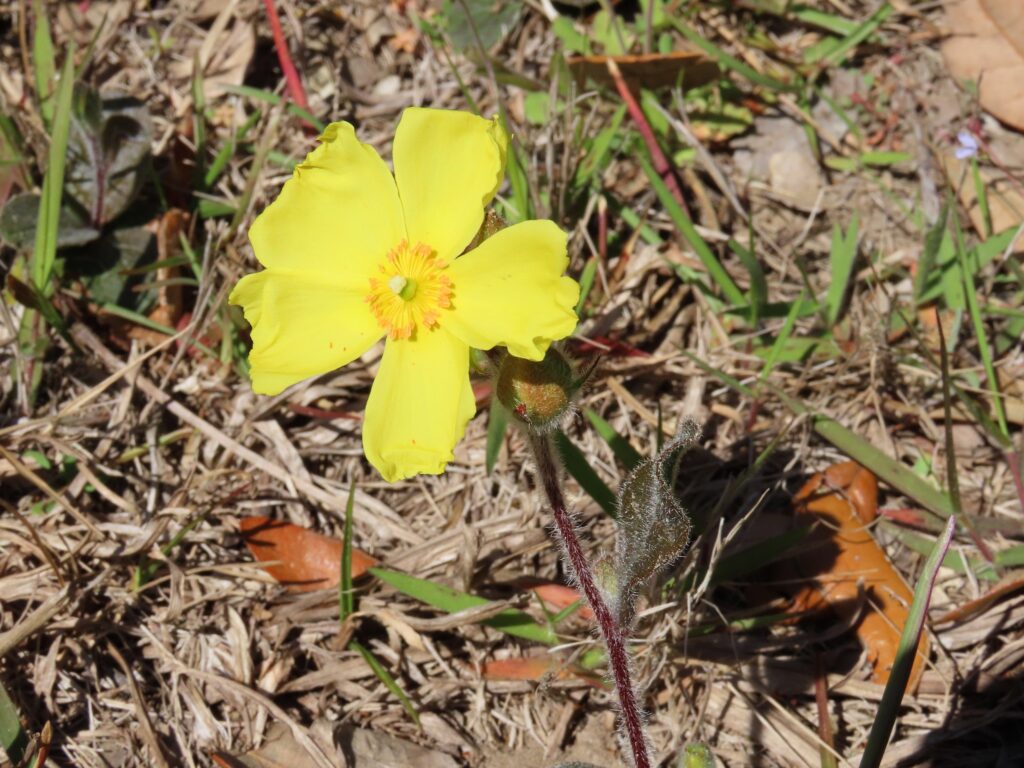
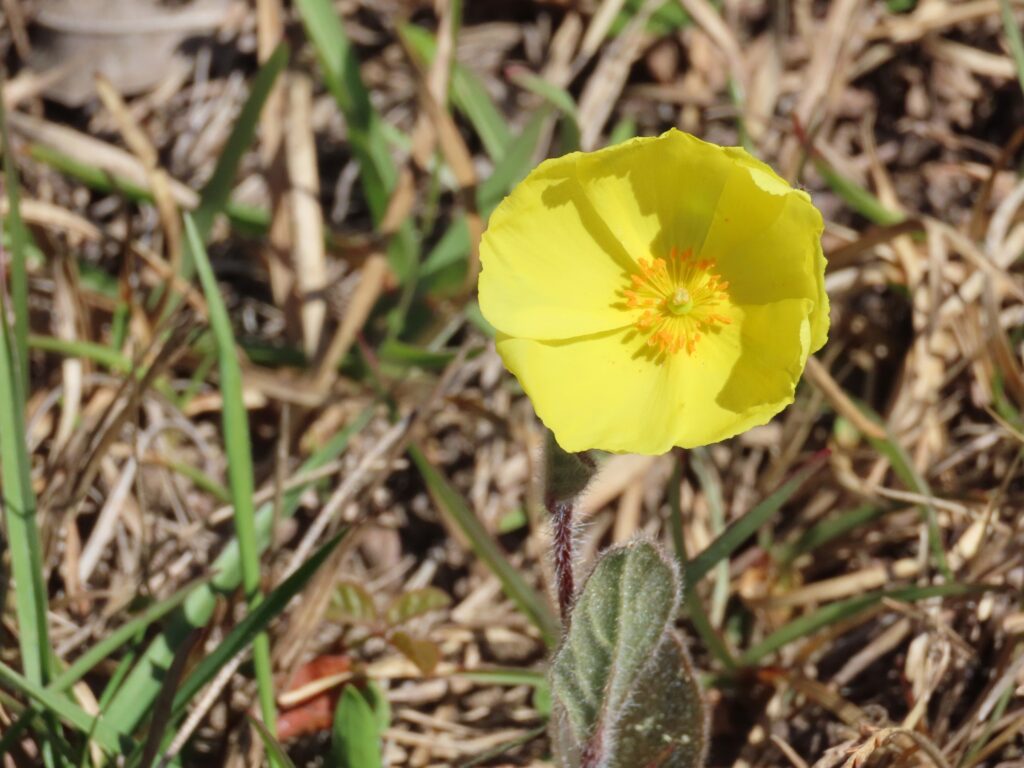

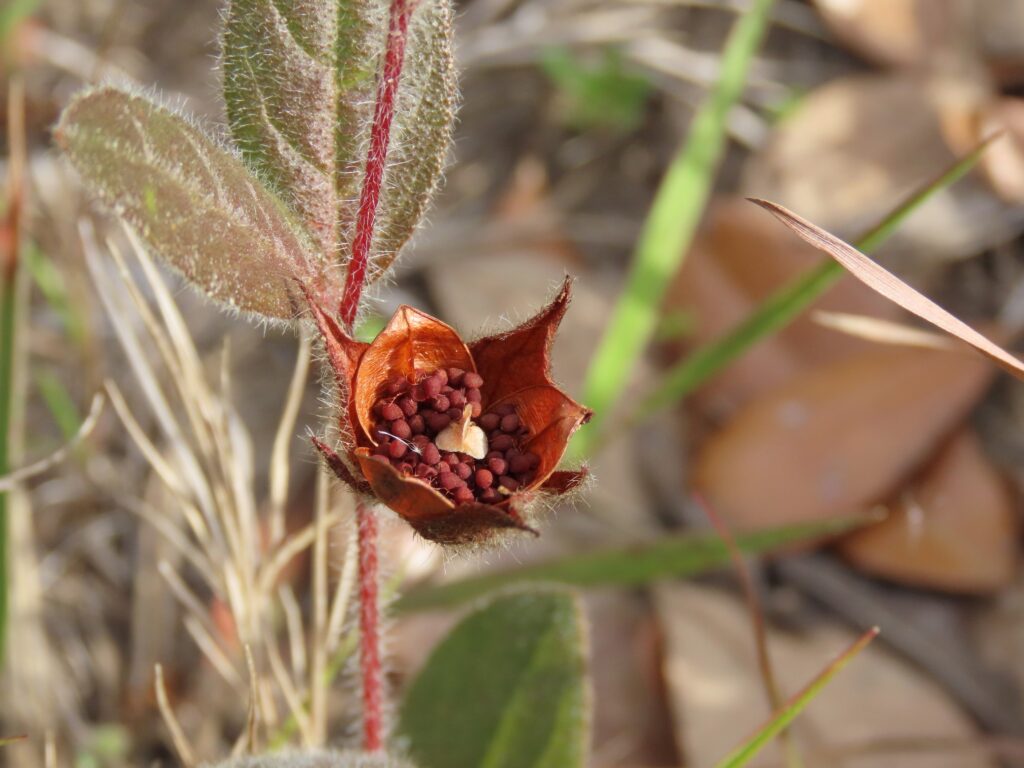
This week for Flora and Fauna Friday it’s the floral oracle of the solar aura, Carolina Rockrose (Crocanthemum carolinianum).
Carolina Rockrose is a tiny wildflower adapted to the barren sandy soils of our Longleaf Pine savannas in the Lowcountry. It exists for most of the year as a rosette of hairy leaves, barely two inches wide, clinging to the open sands below a savanna. Out of sight and paid no mind by all. Yet, approaching the threshold of spring, a burgundy pedestal for petals is lifted. Atop this silver hair lined stalk a bloom broods. On the doorstep of a dew-soaked daybreak a golden glow, small and low, syncs in step with the cracking of dawn. Petals unfurl as sunlight shatters the shadow of night. A reflection of the magnificence of the morning sun, mirrored in miniature upon the land, mere inches above the sand. Carolina Rockrose greets the day this way, emulating the sunrise, as if in ritual, to dispel the shadows of winter and welcome the warming of spring. Five radiant yellow petals display a ring of golden anthers at the core of the flower, the ball of fire in its glowing sky. Standing no more than ankle high, this compact flower is nonetheless a beacon for bees.
Carolina Rockrose is one of our fire dependent species, not just adapted to tolerate, but relying upon frequent fire on the landscape to survive. Although some landowners have begun to replant, no natural Longleaf Pine, the cornerstone of out Southern savanna, survives on Edisto Island. Yet, remnant dependents, like Carolina Rockrose, still cling to life on our Sea Island. In corners and crevices of stabilizing, equalizing chaos, it is sheltered from the loss of the long shadows of the savanna, an ecosystem now shattered and scattered into islands in a sea of smothering stagnation. These relic pyrophytic plants have been facing the day, for decades on centuries, keeping hope for the fires of change to sweep through with the warmth of a new day, a spring of salvation. The recent revitalization of efforts to return Longleaf Pine, fire, and native plants to the Lowcountry landscape offer hope for us to rekindle a spark and return some of the native ecosystems we once had to the Sea Islands.
This week for Flora and Fauna Friday we’re investigating a duo of agile aerial assassins, the Hawks of Genus Accipiter.
We have two species of Accipter Hawk here in South Carolina, the Cooper’s Hawk (A. cooperii) and the Sharp-shinned Hawk (A. striatus). Here on the Sea Islands, both wander our way come winter, with the Cooper’s Hawk being the more abundant. They are inhabitants of woodlands of all forest types and rarely a guarantee to see here so close to the coast.
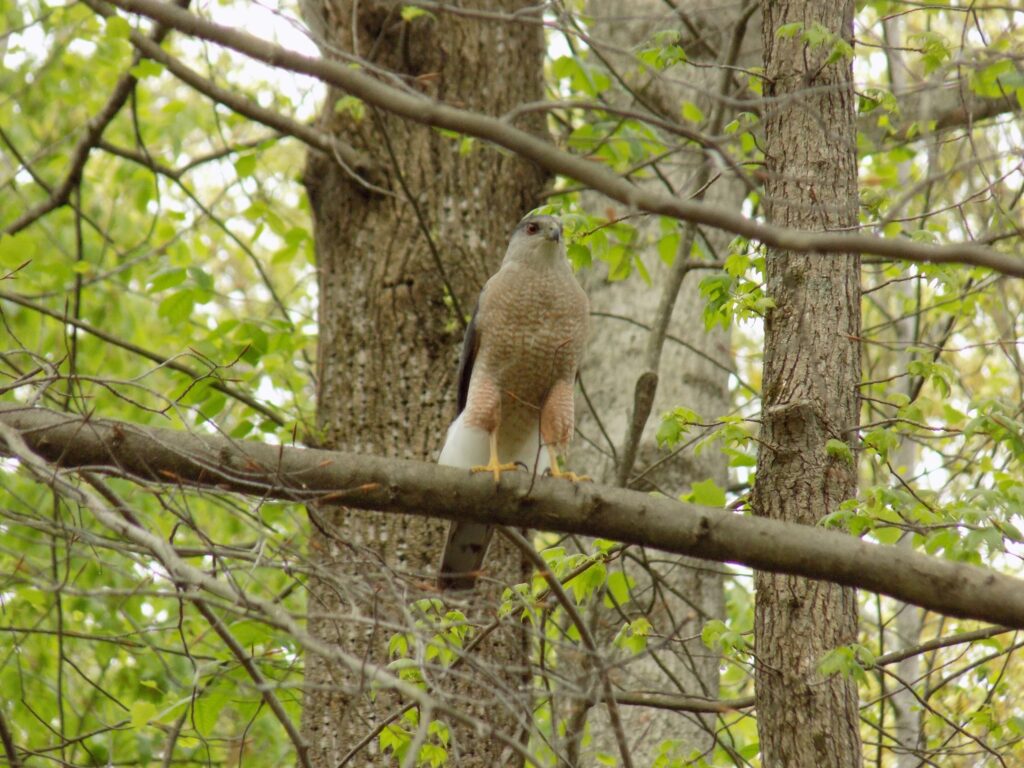
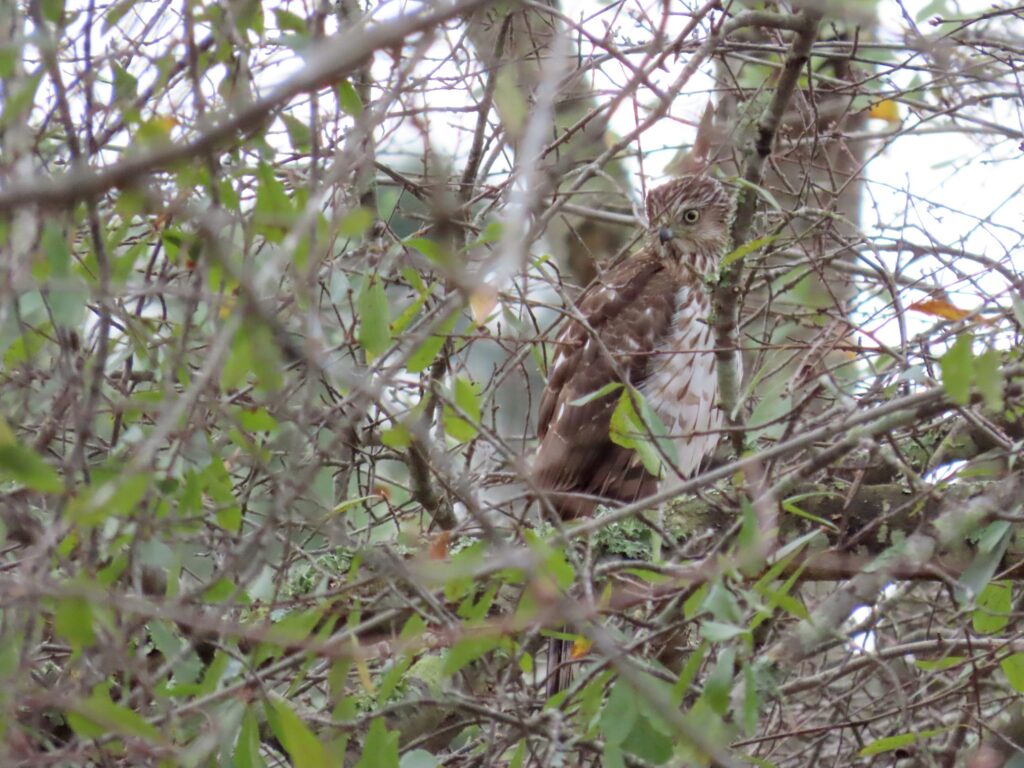
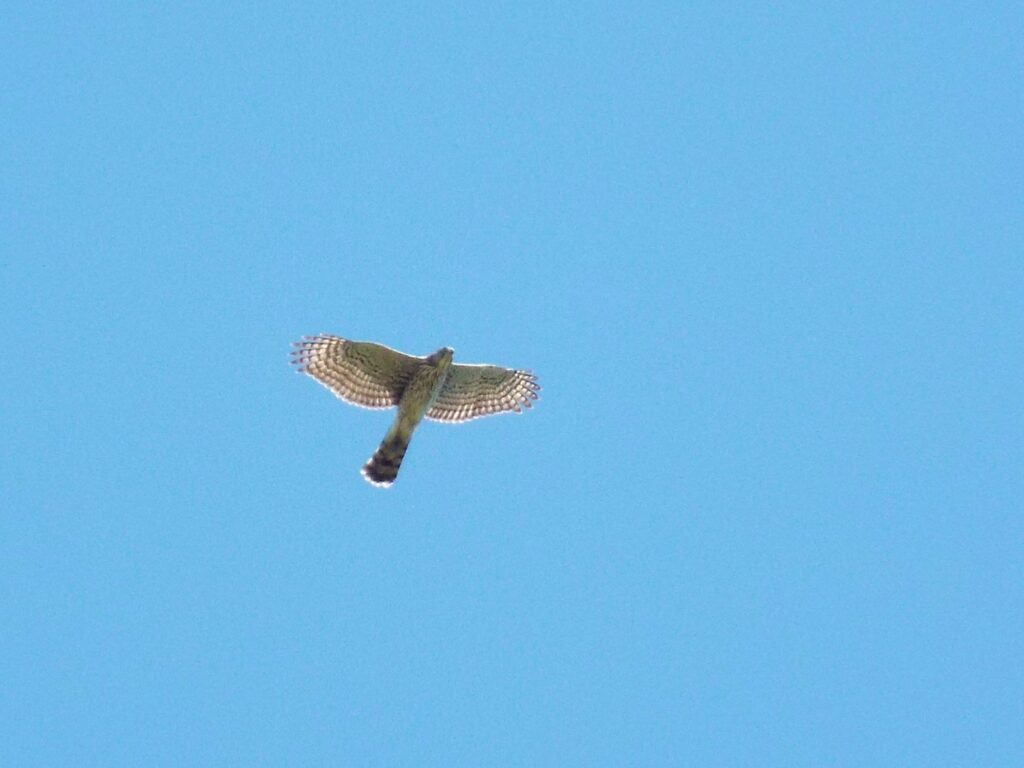
Cooper’s Hawk: (1) Adult | (2) Immature | (3) In flight
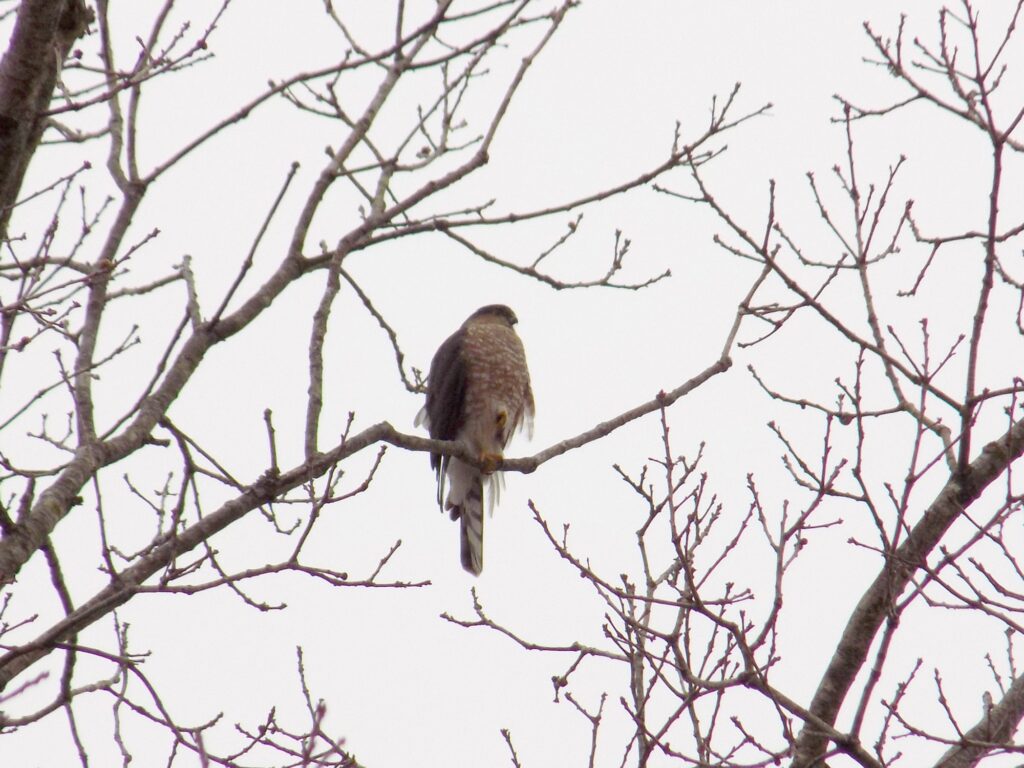
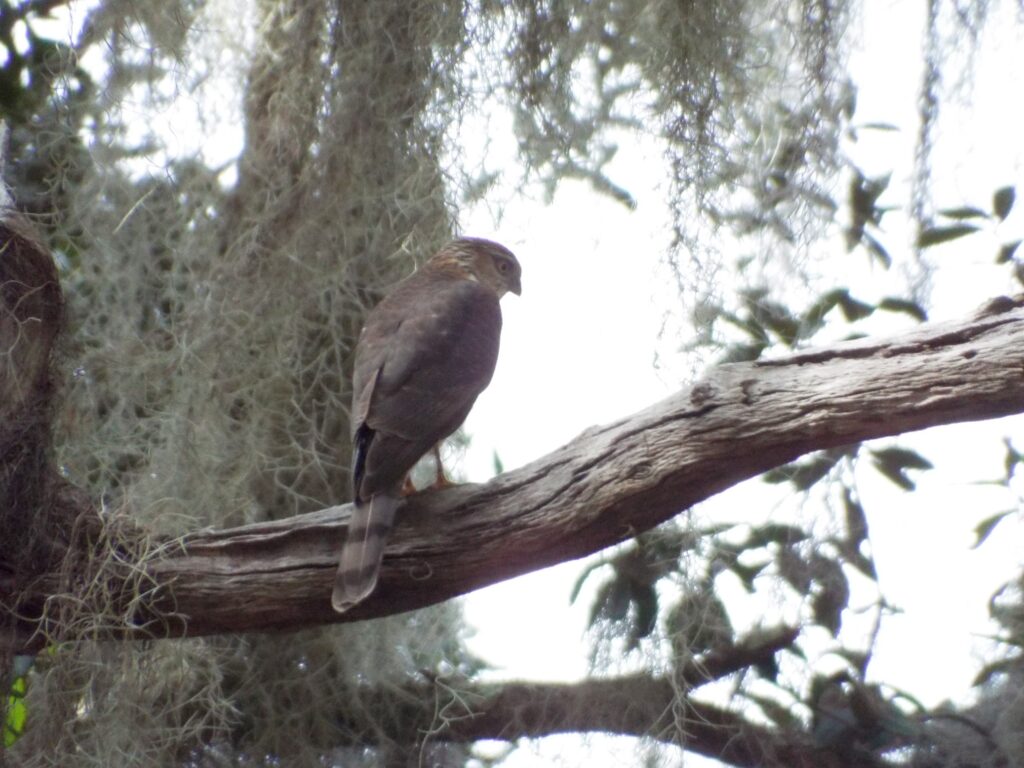
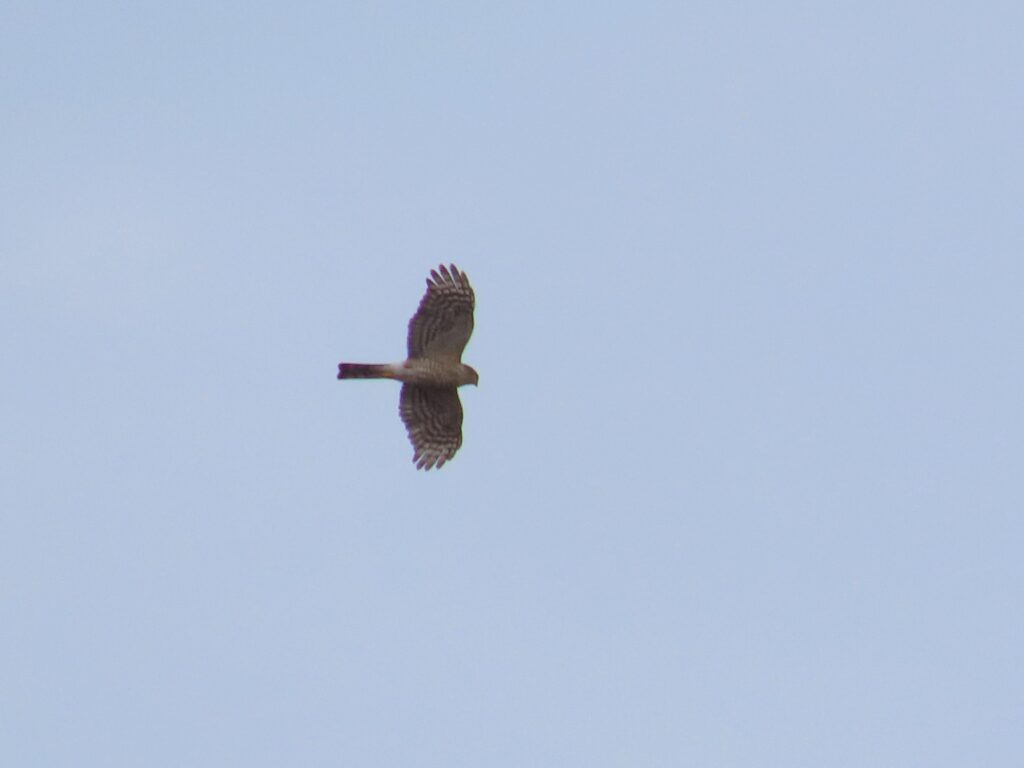
Sharp-shinned Hawk: (1) Adult | (2) Immature | (3) In fight
Both our Accipiter Hawks are lean framed and, when full grown, have a back coated in gunmetal-gray, a breast of rust-orange finely checkered by white, a white rump, a long barred tail, yolk-yellow legs, piercing scarlet eyes, and a dark slate-gray cap on their head. Juveniles instead have yellow eyes and coat themselves in a mantle of walnut-brown with a white chest streaked in a lighter chestnut-brown. In flight, their wings are light with many fine, dark bands. Both these birds, as adults and as juveniles, look very similar to one another and can be difficult for even seasoned birders to tell apart without careful consideration. The Cooper’s Hawk has a heavier bill, thicker legs, and a larger head. Sharp-shinned Hawks tend to have a squared off tail tip, a short neck, and more of a dark hood than a cap on their head. There are many other minute difference between the two but the big one I’ve yet to mention is size. Cooper’s Hawks can be twice the size of a Sharp-shinned Hawk, or they can be nearly the same size. In raptors, the females are larger than the males. So a small male Cooper’s Hawk can look practically the same size as a big female Sharp-shinned Hawk. But on the opposite extreme, the two are strikingly different, with a small male Sharp-shinned about the size of a Blue Jay and a big female Cooper’s as big as some Red-shouldered Hawks. The male Sharp-shinned hawk is, in fact, our smallest hawk, but not our smallest raptor.
A streak of gray, a cloud of feathers, and the forest falls silent in a moment in memorial for a songbird. An aerial assassin has silenced an unsuspecting soul. Songbird snacking is the modus operandi of the assassin-like Accipiter Hawks. The Sharp-shinned Hawk lives on a diet of almost entirely songbirds. Cooper’s Hawks eat much the same but make use of their heavier frame to diversify a bit by including squirrels, bats, and mice. Our Accipter Hawks are masters of aerial agility and arboreal acrobatics. The Sharp-shinned Hawk takes the gold between these two sister species. Sharpies can fly at break neck speed while they glide, dive, pitch, and yaw between branches amidst the densest of brush. They use this unmatched agility with their keen vision to blindside birds buried between bushes. In suburban settings, Cooper’s Hawks are notorious for watching bird feeders from afar, diving down to skim the surface of the grass, then popping up over a bush or hedge to pluck a panicked feeder bird out of midair.
This week for Flora and Fauna Friday it’s an omnipresent weed that’s tough to get ID’d, Cudweed (Gamochaeta spp.).
Cudweed, or Everlasting, is a genus of small, innocuous, wind-dispersed wildflowers in the Aster family and they can be found growing on practically every acre of South Carolina. Cudweeds grow in lawns, along roadsides, on top of dirt piles, between field rows, in dry ditches, between stumps in clear cuts, and pretty much anywhere there’s open air and open ground. The genus itself is easy to pick out on the landscape but the individual species are tough to tell apart. We have about six species of Cudweed that can be found around the Sea Islands, three native and three introduced. The most common are Purple Cudweed (G. purpurea) and Narrowleaf Cudweed (G. calviceps), both native to the Southeast, and American Everlasting (G. americana) and Pennsylvania Cudweed (G. pensylvanica), both introduced to South Carolina. Purple Cudweed has wide, hairy, silvery leaves and purple tipped flowers. Narrowleaf Cudweed has narrow, hairy, silvery leaves and likes to grow laterally as a clump. American Everlasting has hairless leaves, platinum-white stems and leaf undersides, and also grows as a clump. Pennsylvania Cudweed has densely fuzzy, silvery stems and long, broad leaves with a fine fuzz.
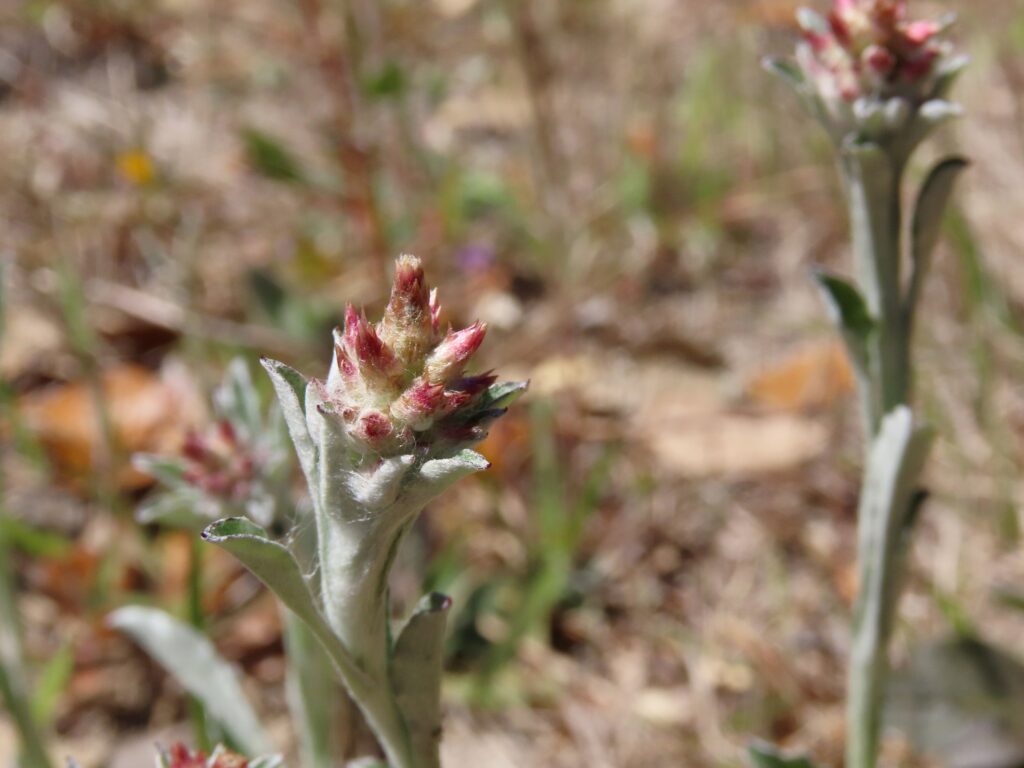
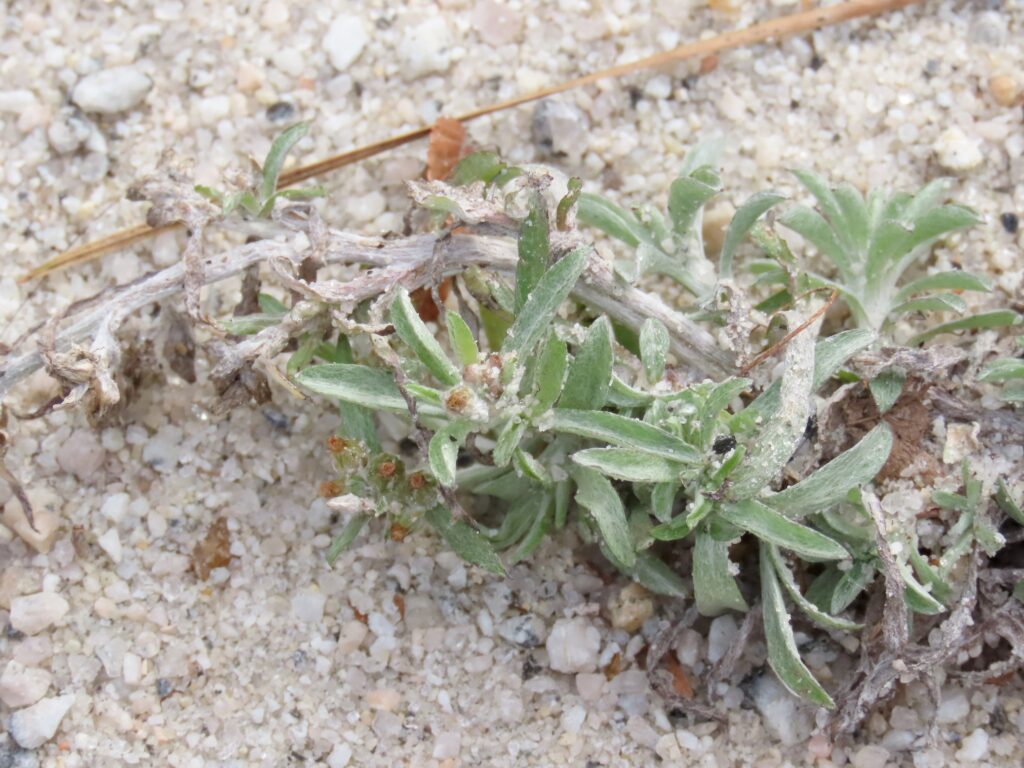

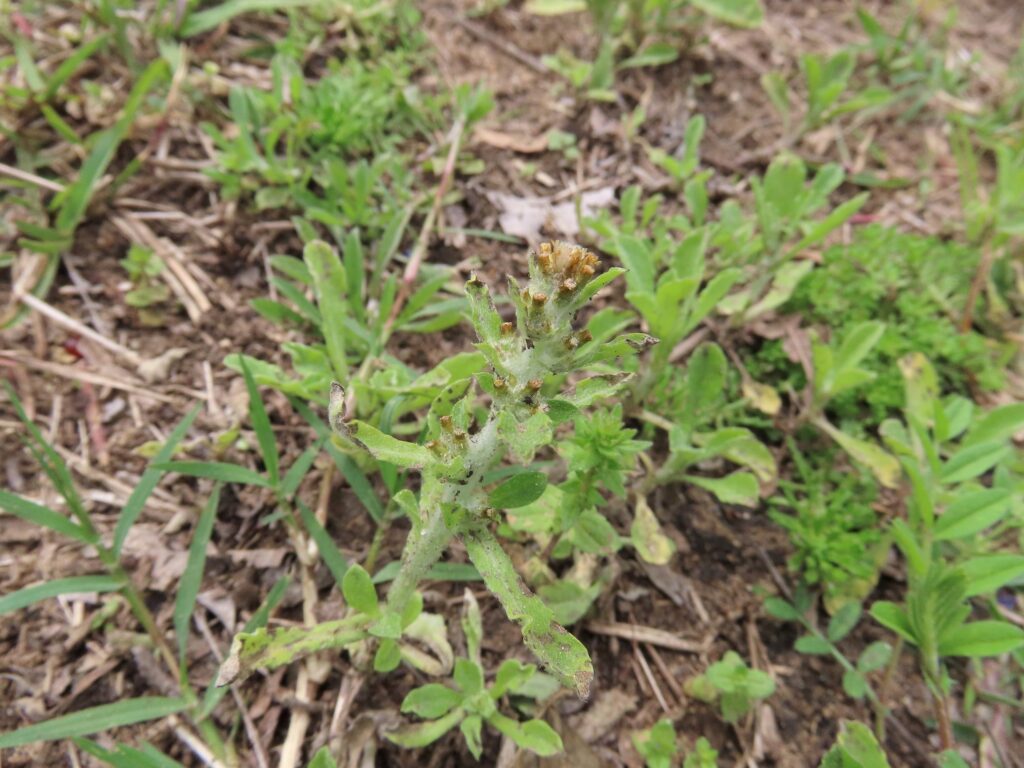
Top Left: Purple Cudweed (Gamochaeta purpurea) | Top Right: Narrowleaf Cudweed (Gamochaeta calviceps)
Bottom Left: American Everlasting (Gamochaeta americana) | Bottom Right: Pennsylvania Cudweed (Gamochaeta pensylvanica)
All our Cudweeds share a few common characteristics. They have simple, spoon-shaped leaves with a cupped margin and are often covered in fine, silvery hairs. These hairs act as a sunscreen and lip balm of sorts, helping keep the plants cool and retain moisture. They grow these leaves into a tight, circular, basal rosette on the surface of the soil. Cudweeds are notable for being predominantly fall germinators, cropping up at the end of the growing season and growing all winter. In spring they send up a short, stiff flower stalk strung at the top with sparse rungs of flowers. The flowers for most Cudweed species are small, urn-shaped, petal-less, and practically devoid of any compelling colors or patterns, generally just washed in grays, browns, and greens. Once pollinated these flowers mature to release a tuft of wind-blown seeds. Most species are annuals, but some biennials. Cudweeds are a wall flower of the wildflowers, existing everywhere in plain sight, but rarely at the forefront of anyone’s mind. However, they do play an ecological role as a pioneer species. They’re one of the first plants to take root on new terrain and freshly turned earth, helping to stabilize the soil and make way for more perennial plants. They are also one of the host plants for the American Lady butterfly (Vanessa virginiensis). Their spiny, khaki and black striped caterpillars feed on Cudweed leaves and flowers, curling their stalks to build a silken tree house, where they can retreat during the day.
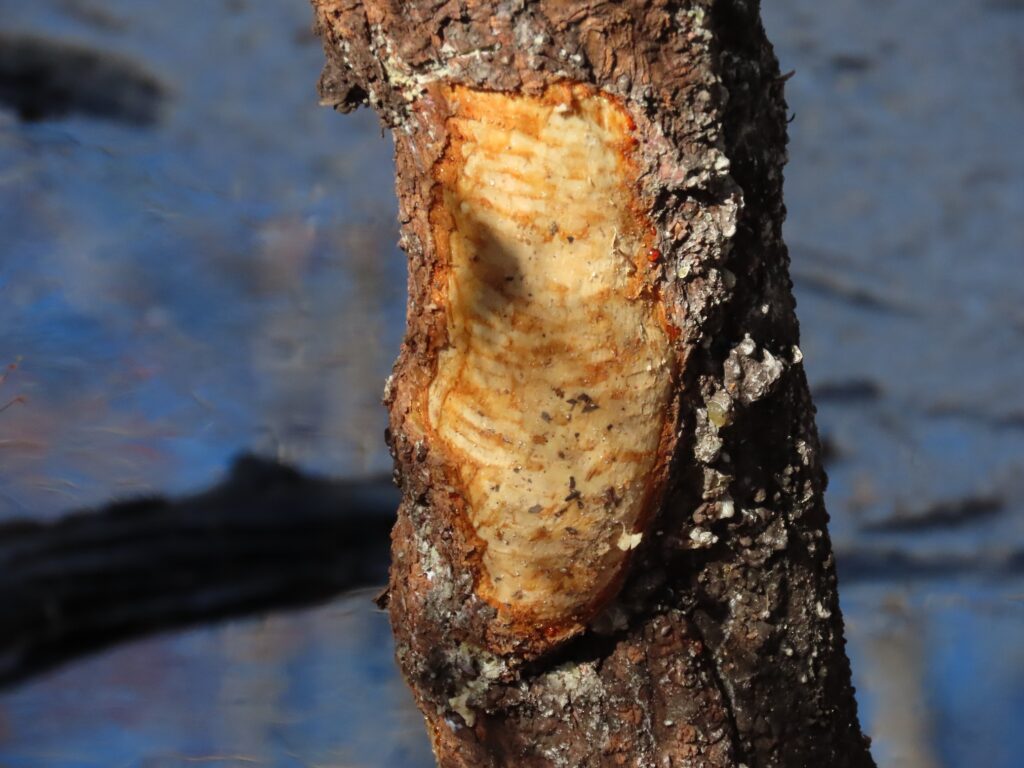
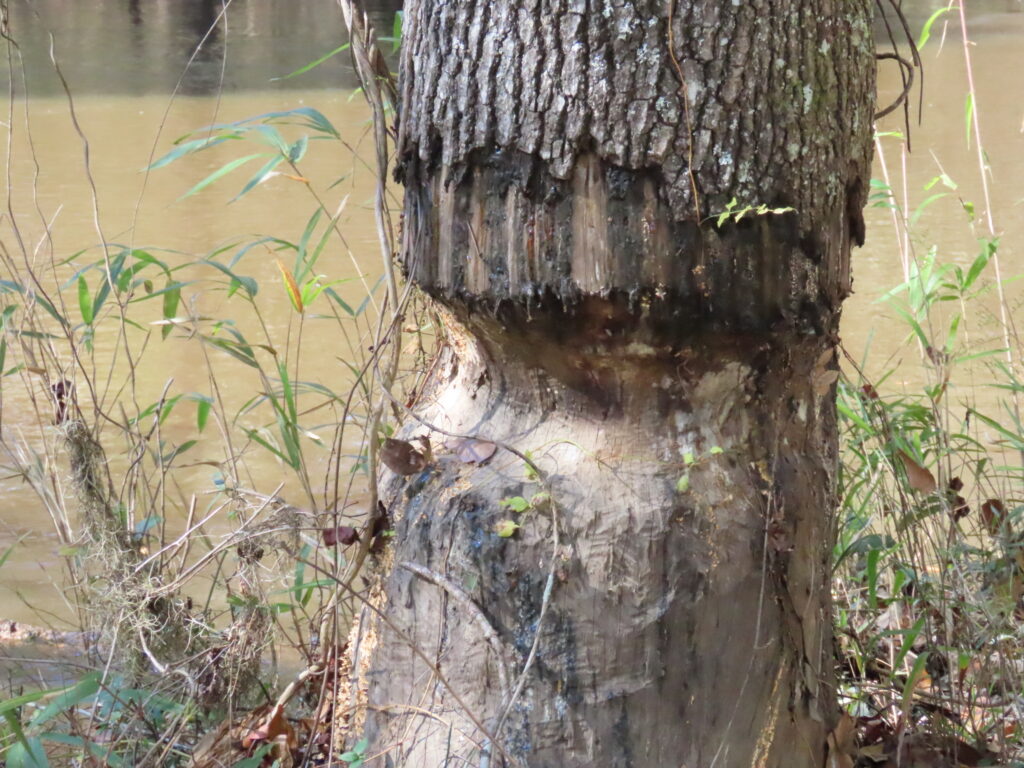
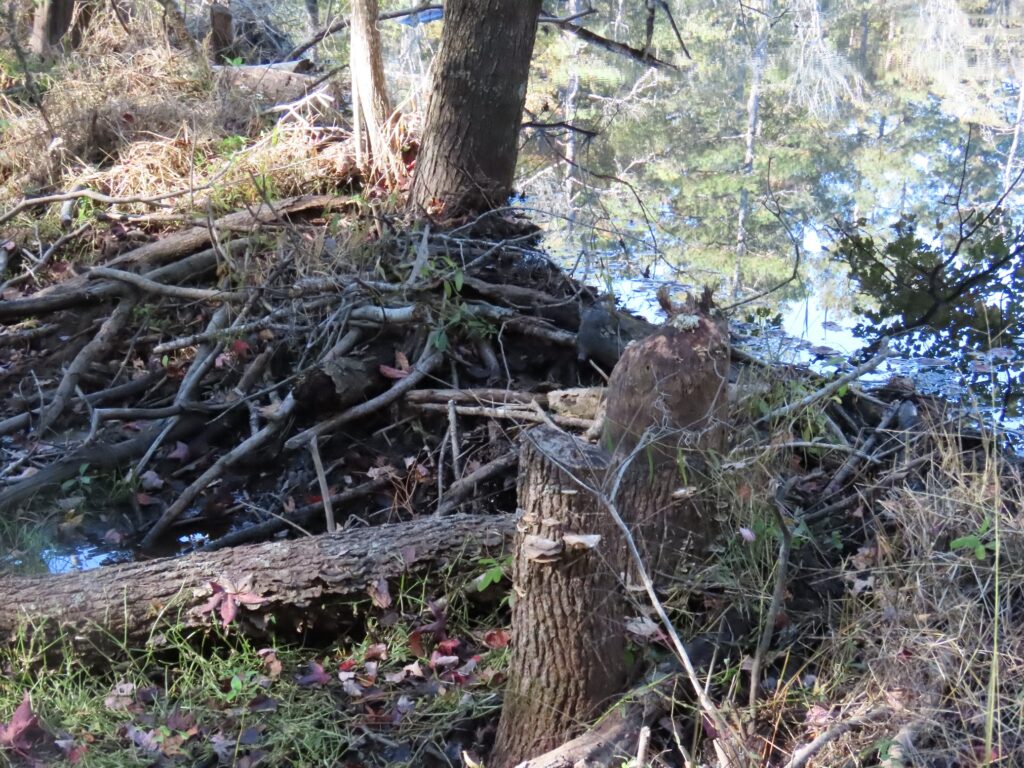
This week for Flora and Fauna Friday we welcome the turbulent return of our wetland building rodent, the North American Beaver (Castor canadensis).
Beavers can be found in freshwater rivers, creeks, marshes, and ponds across all of temperate North America. Beavers are fascinating mammals with a whole host of unique traits. To start, they’re a nocturnal, aquatic mammal. As an aquatic mammal, they of course have webbed feet for speeding up swimming. They also possess a flat, leathery tail that, like the bottom of a Jon Boat, keeps them level and stable as they putter across the shallow waters of their pond. Also, just like a Jon Boat planing into the surf, that flat tail can deliver a bone rattling slap to shake awake the unaware. Beavers mainly slap their tails to signal danger for their family, before retreating to the safety of underwater submerged tunnels. Beavers are North America’s largest rodent and they share their trademark oversized, ever-growing incisors, taken to the extreme. The front teeth of Beavers, and many other rodents, are a rusty orange in color. This color comes from iron rich compounds in their enamel, which greatly enhances its durability. Their teeth continuously grow and wear down throughout a Beaver’s life, self-sharpening against each other. Beavers need these bolstered buck-teeth to feed and house themselves. Their diet consists of tough vegetation, including cattail and water-lily roots and, as what they’re most well-known for, wood! However, Beavers don’t eat just any old wood. They eat the living wood of trees and shrubs; snacking on tree leaves, twigs, and small branches whole or peeling tree trunks like corn on the cob, their teeth chopping it up like a wood chipper. But, unlike every other animal, rather than climbing to the treetop to find a meal, they prefer to bring the treetops down to them. Beavers will gnaw on pondside trees to feed on their inner bark. If they decide they want seconds, they girdle the tree as they waddle and whittle their way around the trunk, chiseling out chunks like they’re sharpening the world’s largest pencil until, with a cacophonous crash and splash, they’ve felled the entire tree precisely into their pond. From the safety of the water, they’ll stock their underwater larders as they work through their windfall of leftovers.
A Beaver’s relationship with wood and wetlands doesn’t end there. Beavers are the textbook example of an ecosystem engineer, a species whose day-to-day life and specialized behaviors change the world around them to usher in environmental changes that create a novel new habitat, which other species then rely upon. Like the sight of a shaggy suburban lawn does to some folks, the sound of running water incenses and overwhelms a Beaver with the maddening urge to cut vegetation. At the whisper of a trickle Beavers fell trees, clip limbs, haul logs, dig holes, waddle and daub. The course of a river be dammed, come Hell or high water. Beavers build dams and those dams staunch the flow of water to create Beaver ponds. Beaver ponds grow marshes, willows, gums, and alders as they expand their banks into the surrounding floodplains, all food for the Beavers. These ponds create a uniquely stable but complex wetland ecosystem that supports hundreds of other species, whether they have fins, fur, feathers, or flowers. Within the pond, Beavers will build their lodge, a cozy hollow hovel made of mounded mud and sticks, with underwater entrances, where they can rest and raise their young. Beavers live in family colonies of about a half-dozen, comprised of the parents and both this year’s and last year’s offspring.
The Beaver once ranged across almost the entire continental United States, bounded by the scorching sand of the Mexican desert to the south and the frozen permafrost of the of the Canadian tundra to the north. From the earliest days of the Colonial Era, Beavers were fiercely hunted and trapped for their valuable fur and musk glands, used in men’s clothing and women’s perfumes respectively. Their populations saw dramatic declines from unchecked and exploitative hunting pressure, extirpating them from many river systems entirely. However, hunting regulations and a change in hunter and trapper ethics, brought on by the conservation movement of the early 1900s, allowed the Beaver to rebound decisively. Now, in the early 2000s, they’ve begun to return to even Edisto Island, likely one of the first places in North America to have eradicated the Beaver from its bounds, some 300 years ago. In the modern world, Beavers have returned home, restoring stability and biodiversity to natural wetland ecosystems across the nation. However, these ecosystem engineers have found themselves at odds with human engineers. To a Beaver, a culvert or trunk is not a perfectly calibrated piece of hydrological infrastructure. It’s a dam hole. Nothing that cramming a truckload of logs and a few yards of mud into can’t fix. This leads to sudden flooding, as intended by the Beavers but not the civil engineers. Beavers also dig underwater tunnels into the banks of berms and dikes, which weaken them out of sight and risk a sudden breach if overlooked. Their lignivorous, wood-eating ways also don’t curry them any favor with foresters, orchard owners, and landscapers, as they can girdle a plot of prized, decades old trees in a mere night. Here on the Sea Islands, where freshwater is as scarce as elevation, Beavers are more of an annoyance than an imminent threat undermining our infrastructure. In the Lowcountry, they’re kept in check by Alligators for the most part but have nonetheless taken a shine to our swamps, rice fields, and farm ponds where, on occasion, they’ll plug a pipe or cork a culvert if they hear that siren’s song ringing of running water.
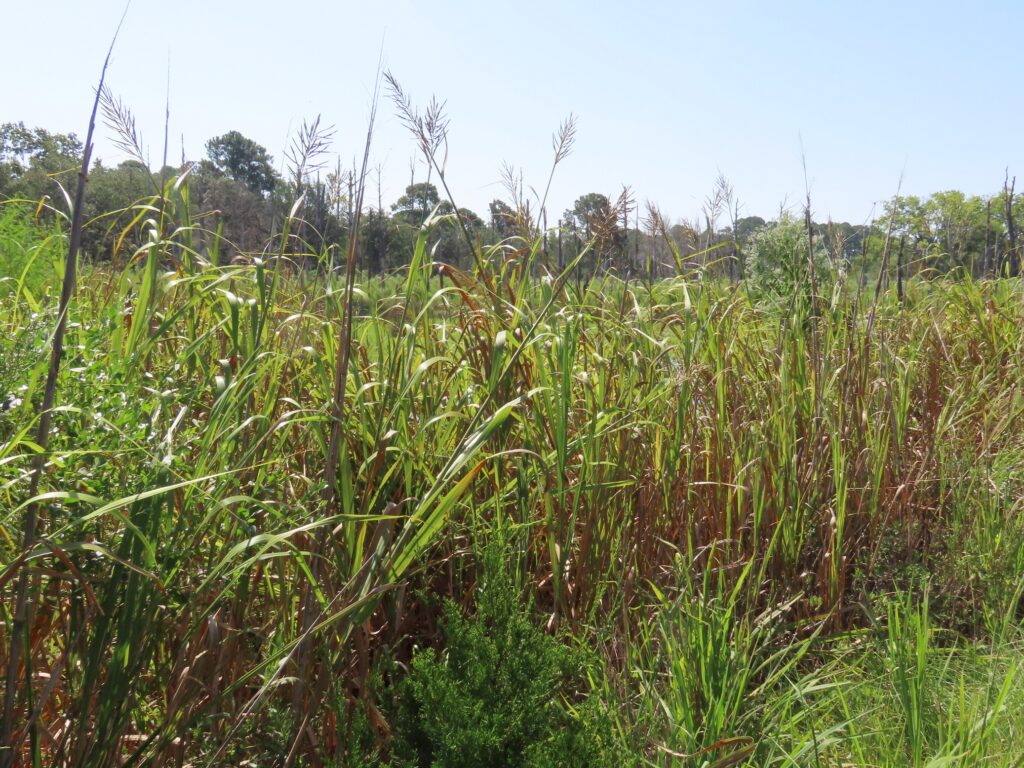


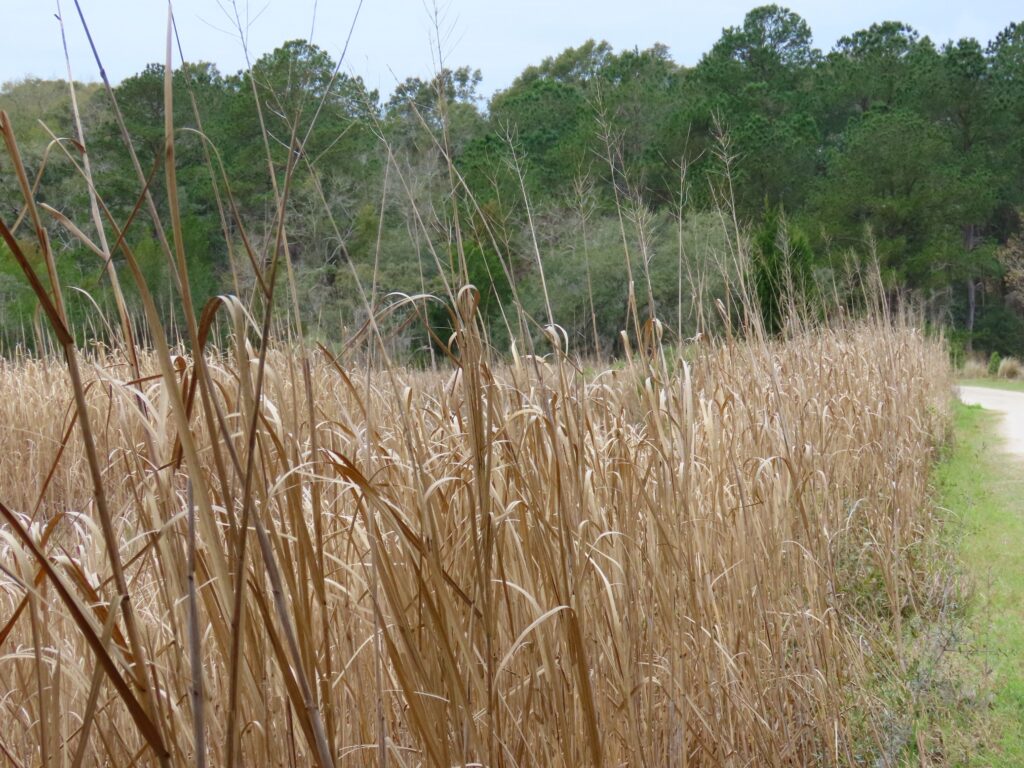
This week for Flora and Fauna Friday, we’re immersing ourselves in a towering grass of our brackish marshes, Big Cordgrass (Sporobolus cynosuroides).
In the waning stillness of the morning, brightness breaks the ice of dawn into day. Khaki Cordgrass calmly crackles, bathed by the winter’s smoldering sun. That soft sizzling is soon silenced by the bowing, blowing breeze upon the brackish bottom. That tranquil tinging muted in a moment by reeds ringing across the rice field, wetland wind chimes in wintertime. Big Cordgrass is a big deal in the brackish tidelands of the Sea Islands. It’s a tall reedy grass growing well over head high with a narrow and circular stem, sparse emerald-green leaves, and an airy, bottlebrush-like inflorescence of upward facing spikes of seeds. In winter, this perennial colony forming plant dies back to its roots but its dried, khaki-tan stems remain preserved and upright for months. When baked in the first light of morning, these dried reeds quietly crackle and pop as the chill of night is warmed from their bones, producing a subtle rain-like tone when its stems shift and strain from thermal expansion, like joints popping after a long night’s rest. Like its salty sibling Smooth Cordgrass (S. alterniflorus), Big Cordgrass is an ecological mainstay in its narrow wetland niche. Big Cordgrass can be found growing in brackish tidal marshes or on the margins, bluffs, and berms surrounding saltwater marshes. Big Cordgrass can tolerate a fair degree of salt but not the pickling brine of straight seawater. It does best on the frontline of the brackish tidal zone, where salt intrusion is regular but not daily. There it can outcompete the more obligate halophytes like Black Needlerush and Smooth Cordgrass but is itself not overtaken by Cutgrass and Cattails. It also carves out a home on tidal creek margins and headwaters, where the flow of freshwater from the uplands are enough to wash the soil free from some of the salt saturation of the tides. Big Cordgrass is an important foundational species in brackish marsh habitats. It provides a bounty of both seed and structure to a variety of hard to see marshland birds, to include American and Least Bitterns, King and Eastern Black Rails, and Seaside and Saltmarsh Sparrows.